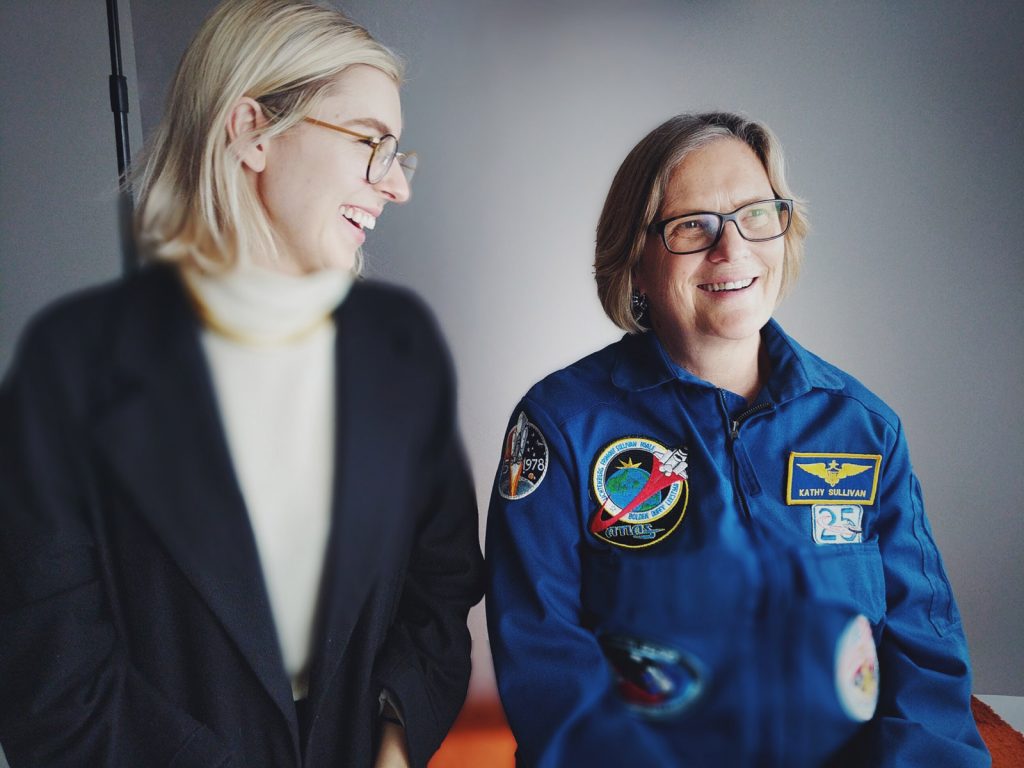Studio Visit: Artist Jason Woodside
A world of color collides in the painter’s bright Brooklyn space

Up several flights in an old Brooklyn warehouse building, artist Jason Woodside‘s works come to life in a flurry of color. Here, he imagines and executes smaller spray-painted works. He also conceives large-scale public pieces, like his massive mural for LA’s Google pop-up. Today, Woodside’s work is available to all at a remarkably reasonable price, in the form of Google Live Cases for the Pixel 2. This isn’t his first accessible commercial endeavor. Of the several surfboards scattered around the space, one features designs by Woodside. Three years ago, he hosted an exhibition of wood resin works in Paris’ Colette. In a way, his work is aesthetically accessible to everyone, based on emotion rather than figurative composition. All interpretations are correct. To be honest, they’re also just plain fun.

“This is where I conceptualize a lot of stuff,” he says of the big, bright space before walking us into a kaleidoscopic spray booth tucked in one corner. “This is where I finish up and address whatever needs to be sprayed. I also kind of look at it and see how I can make it into a larger-scale piece.” There’s a considered calmness to Woodside that yields to an honest excitement when he talks about his work. “I spend a lot of time just thinking,” he continues. “I come in here and just think about light, shadows, and how I can incorporate that. I also consider what city I want to work with and where I would put a piece—even what sort of visibility would I get there.” For shows, he says he thinks up a concept first before building each piece; the concept and its voices take the longest to develop.

Color and structure can be said to define the work of all artists, naturally. But with Woodside, one immediately wants to talk about both. “I don’t even know why my color choice does what it does,” he says before revealing that his understanding is actually quite informed. “It’s about separating the colors far enough apart so that they’re not too heavy in areas. Where a bunch of artists reference the color wheel, which is important, I do that mostly on a subconscious level.” Woodside admits to a fascination with what pulls one’s eye, where and when. This has helped his pieces developed surreal and unreal perspectives. “I care about what you look at immediately and what you then start to notice.”

In the studio’s spray booth, layer upon layer of color collides. The space almost glows, but the artist feels trapped by his materials. “I hate it. I hate using spray paint it’s so bad for everybody,” he explains. “I use it because it dries really quick and I am able to layer up or paint over something.” For his swirling or structured and dimension-defying geometries, he begins from the center of a canvas and moves outward. “I don’t know what I am going to do until ‘OK, it’s done,'” he says.

A thorough look at any one of Woodside’s pieces leads to thoughts of optimism and positivity. His studio intensifies this, beautifully. Both, Woodside says, reflect his values. That said, he understands about his work that, “Some people hate it. Some people love it. When it comes down to it, you just have to like it yourself and if other people do, then cool.” His ultimate takeaway is self-reflective. “To be a creative person you have to be a bit crazy. To expose your work so many times with so many people there just to judge, it’s scary. It’s so personal. This comes out of you,” he says pointing to pieces he has wrapped on an opposite wall.

For outdoor works like the LA pop-up, a different process is required. “It begins with considering the neighborhood, where it’s going to be and the color of the buildings around it,” he explains. “I think about the colors I use in contrast to the surrounding structures because the work needs to be able to pop.” He says what he did in LA was contrasty and there’s allure there. Surprisingly, it was also done in a matter of weeks—from inception to unveiling. It’s all because of the artist’s excitement: “I work really fast because I want to get to the next one.”

“I think these collaborations sustain the bulk of artists,” he says before acknowledging that the traditional model of gallery representation and showcasing still exists but for such a select few. “Somebody will reach out from a huge company. It’s kind of scary but those are the ones that pay the bills and where you get the most visibility and recognition.” Woodside has never reached out to anyone, brands have always found him—and they let him maintain creative control of his work. Perhaps that’s why they’ve been so successful thus far.
Google’s Jason Woodside-painted pop-up is located at 8552 Melrose Avenue. Woodside’s Pixel 2 Live Case, released today, retails for $40.
Mural image courtesy of Google, all other images by David Graver and taken on the Google Pixel 2












